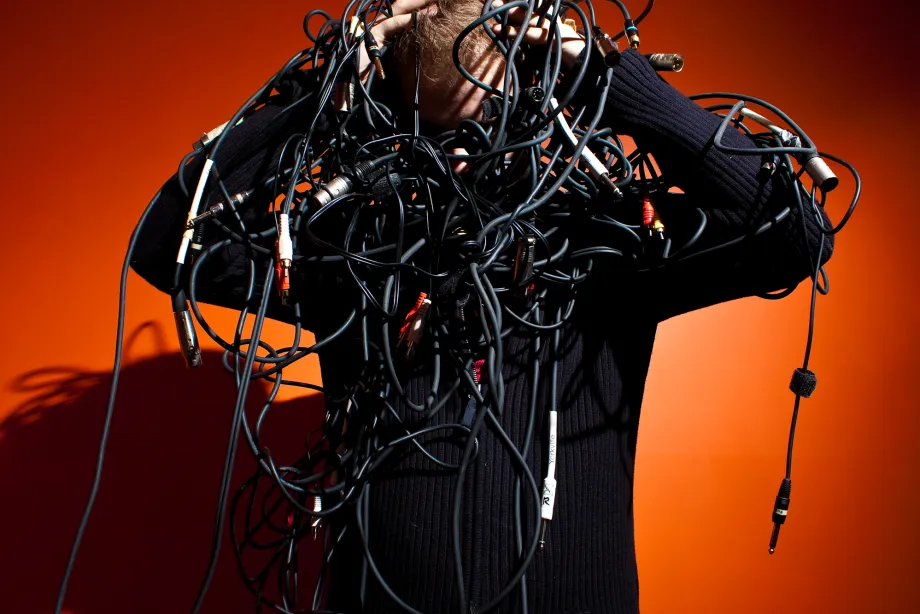Keeping Mixing Simple
Aug 04, 2010Mixing is a lot of fun. It is that magical stage in the recording process where all your great tracks come together and create a unified and cohesive song. It is also the most dangerous area of music making today.
Because today’s computers and DAWs offer seemingly unlimited tracks and plugin effects (mixed with powerful automation), many people feel the need to use it all. These countless options can actually lead to longer than necessary mixing sessions. And on top of that, the mixes don’t even sound that great! What’s the point of using all your plugins and spending all that time if at the end of the day you don’t get a great mix?

Via Gavin Schaefer Flickr
Let’s Do The Time Warp, Again
If you go back 20 or 30 years ago, the typical album was mixed on an analog console with a fixed number of available tracks, usually 24 or 32. Effects were achieved through the use of outboard gear, that you would “plugin” to the mixer as an insert. If you had one vintage Fairchild compressor for example, then you could only use it on one track. The same went for your reverbs and delays, etc. You had a series of constant limits to how much you could do.
But did that hinder the engineer’s ability to mix a great album? Heck no! Some of music’s best mixes came out of that “limited” analog era and will stand the test of time! So why could great songs be mixed with only 24 tracks and a handful of outboard compressors and EQs and yet people today complain that 48 tracks and “unlimited” uses of their SSL Mix Bus plugin is not enough? We have gotten lazy.
Redefine and Simplify
The lack of limits conditions us to move without thinking; to aimlessly throw plugins around and automate levels. We “feel” that we are mixing, but in reality we are just doing busy work. Real mixing starts with a plan. Listening to the recorded and edited tracks and knowing the destination; where you want the song to arrive. At that point, you try and find a way to get it there.
Here are some simple suggestions:
Start by creating a false boundary of 24 to 32 tracks. If you need more than that, then bounce down to free up a track. In a program like Pro Tools you can always “keep” the original track, but just hide it and make it inactive. Having a finite number of tracks to mix with will help keep you focused and will make you analyze why you want to do what you want to with each move.
Choose one or two compressors and EQs and use them exclusively. Grabbing a different compressor or EQ for different tracks may seem sexy and professional, but it’s not helping you mix. What you need is to just pick one as your go-to plug and stick with it. It will help you learn that plugin (how it works and sounds) and you will get better results each time. Trust me on this. When you are mixing for major label talent and you are getting bored, then feel free to use different EQs on everything. But for now, keep it simple.
Limit yourself to a set number of hours to mix a song. Depending on how new to this you are your time may vary, but decide what you think is reasonable for the type of song you’re mixing and time yourself. Setting a “deadline” will force you to keep thinking big picture when you mix. I guarantee you’ll find yourself dissecting some small minute part of the song that really in the end most people won’t notice. Looking up at the clock will pull you back to reality and push you to just get the song sounding sweet as a whole.
Actually Listen To Your Mix
Do you take the time to sit back, close your eyes, and actually listen to your mix? I mean, not just look at the mix on your screen, but hear what’s going on in your song. Many times we tend to somehow skip that part. We “see” what needs to be fixed and changed: the meters don’t seem to be peaking at the right spot, that compressor seems to be slamming hard, that EQ curve seems to be too steep, etc.
In my humble opinion, when it comes to mixing, limiting your options might just be the very best thing you could do. Too many options keep you zeroed in, looking to fix the song. When you are “limited” you can be free to think more about how the song is sounding. It seems obvious, but many of us forget it.
—–
This article is taken from a section of The #1 Rule of Home Recording, a free eBook covering the most important element of producing music in the home studio, the mental approach. To download the rest of the eBook click here.
Discover The 6 Steps for Creating a
Radio-Ready Song from Scratch"
Enter Your Email Below To Receive The Free 17-page PDF,
"6 Steps To A Radio-Ready Song"
We hate SPAM. We will never sell your information, for any reason.

